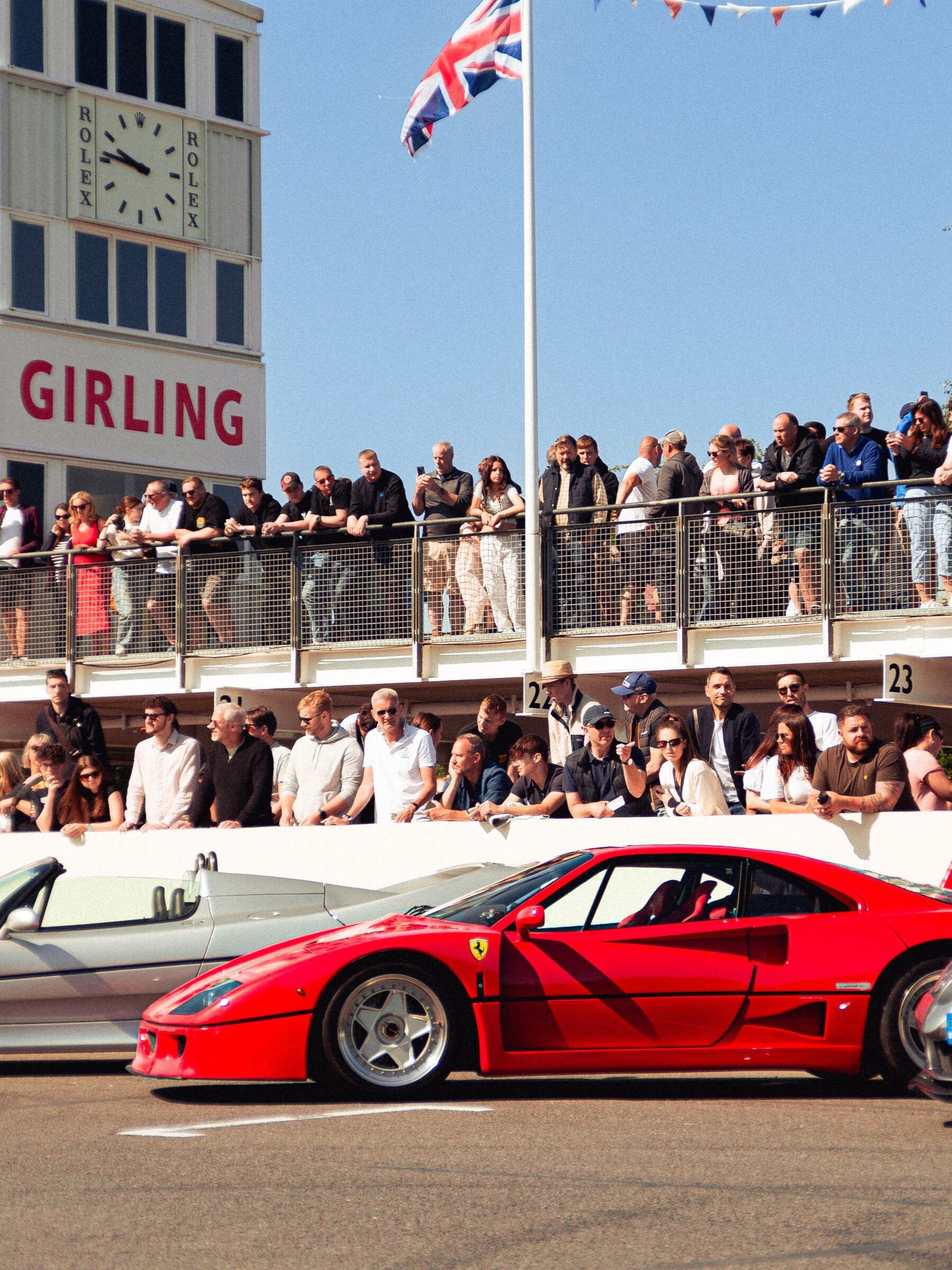Jeep wouldn’t exist were it not for World War II
‘A man is only as good as his tools’ goes the famous quote of dubious attribution. And with few exceptions, nothing rings truer when it comes to war. And one tool is enduring, a vehicle forged in the urgency of conflict that remains as iconic today as it was 70 years ago, a vehicle that undoubtedly changed the course of the Second World War.

The year is 1940, the month July, and across Europe war was raging. Car production has stopped across the world. Anticipating its imminent involvement, America began arming. And on Eisenhower’s long list of weaponry was a vehicle that would change warfare as the allies knew it. “The Jeep, the Dakota, and the Landing Craft were the three tools that won the war,” US General Dwight D. Eisenhower later admitted.
In July 1940 the US War Department approached 135 homegrown car manufacturers with a brief for a light utility reconnaissance vehicle to replace the motorcycles, sidecars, Model T Fords and horses that were relics of the previous war. The proposed vehicle needed to be four-wheel-drive, with a high ground clearance, a sub-600kg weight, and the ability to transport three soldiers and a 300kg payload. If that wasn’t tricky enough in itself, there was a strict 11-day deadline for the proposals, with a prototype expected in 49 days and production-ready test vehicles in 75.
Only three of those approached – Ford, Willys-Overland and Bantam – rose to the challenge, and it was Bantam’s creation that ticked all of the Army’s boxes. Reportedly designed in just 18 hours by freelance designer Karl Probst, the model was – depending on who you ask – known as the Blitz Buggy, Pilot or the BRC (Bantam Reconnaissance Car).
And while the fact that Bantam won the tender is undisputed, what happened next is dubious. Some claim Bantam had already began building its utility vehicle – producing more than 2,500 units – 60-odd of which were all-wheel-steering as per the cavalry’s request – before the US drafted in other manufacturers’ help, whereas others claim the idea had barely left the drawing board.

A 1941 Willys Jeep MA prototype.
Regardless, Bantam got to work on the Pilot, but it soon became apparent that demand well outnumbered supply, and the small-scale production line at Bantam couldn’t keep up. So the War Department shared Bantam’s blueprints with Ford and Willys, and tasked them to produce identical vehicles. Of course, there were a few differences, including Ford’s introduction of the now iconic seven-slot grill (Bantam’s had nine slots). By November 1940 the Willys Quad and the Ford Pygmy had joined the Bantam in testing, before production began in March 1941, a subtle start for the world’s first mass-produced four-wheel-drive vehicle. Each had their own strength – the Bantam the lightest and nimblest at 980kg, Willys’ the most powerful with 60hp and Ford’s the best designed and built.

A 1944 Willys Quad.
Within four months, in July 1941, the Army decided to standardise the design, incorporating the best elements of each, and awarding production of the first batch of 16,000 to Willys, owing to its powerful 2.2-litre inline-four 60hp ‘Go Devil’ engine. Ford was enlisted to increase production volumes in October 1941, with the strict command to make all parts interchangeable. However, in brash American fashion, and not wanting to give credit to Willys, the manufacturer stamped every single of its parts, including nuts and bolts, with an ‘F’. By now, Bantam could no longer keep up, and switched to producing Jeep trailers after December 1941.
In total around 650,000 Jeeps were built during World War II, serving in all theatres with the US Army and the allies, to whom it was supplied under the Lend-Lease agreement. Fast, nimble and indestructible, the Jeep was indispensable on the battlefield, as a troop transporter, an ambulance and the Soviet’s favourite Seep (Sea Jeep). It could tow larger artillery or feature a mounted machine gun, it could ford rivers, and traverse the battle-scarred frontline of Europe. If it got stuck, the soldiers could lift it free, if it broke, it was easily fixed. It came ashore on D-Day, and it carried the Allies all the way to Berlin and beyond.

The Willys Overland Forge Shop, April 21st, 1926.
At the time, General George Marshall (later Chief of Staff under presidents Franklin D. Roosevelt and Harry S. Truman, and Secretary of State and Secretary of Defence under Truman) called it “America's greatest contribution to modern warfare”. In his 2013 book, author Charles K. Hyde wrote: “In many respects, the Jeep became the iconic vehicle of World War II, with an almost mythological reputation of toughness, durability, and versatility.”
There’s no denying that the Jeep helped win the war – even Eisenhower agreed – but when conflict ended in 1945, there was no heroic homecoming. The Jeep remained in military service in various guises for decades, going on to serve in the Korean War and other conflicts. WWII surplus Jeeps (at least those that had made it back to America) were auctioned off, but to date, fewer than a handful remain.

But the utility vehicle had proven itself, and America recognised its potential. Having trademarked the ‘Jeep’ name in 1943, in 1945 Willys began producing the CJ or ‘Civilian Jeep’. It was initially targeted at agricultural workers – those same traits that had made it indispensable in conflict put to work on America’s fruitful farmland. It was revolutionary, with its separate body and frame, high and low ratio four-wheel-drive, rigid live-axles with leaf springs, high fenders, fold-flat windshield, and modular design. Naturally, it wasn’t long before the Jeep took on a more recreational appeal, giving birth to the sport of ‘off-roading’ as we know it.
Through four decades, various manufacturers and 1.5 million units, the Jeep barely changed, with its iconic design transgressing various eras of style and class. It was implemented in all walks of life – there were station wagons and convertible Jeepsters (marketed as a softer alternative for women), all with the same seven-slot grille. Eventually, the CJ was discontinued, replaced in 1986 by the Jeep Wrangler, and the Comanche pickup.
The XJ Cherokee was the next ground-breaking model to debut from the American manufacturer in 1984. Designed by Roy Lunn and Bob Nixon, it was unique in being the first unibody SUV. Its boxy design drew styling cues from the CJ, albeit combined with the creature comforts of a modern car. Its off-road capabilities, however, were on a par with the legendary off-roader. Through two more ownership changes, the XJ Cherokee endured until production ended in 2001, 18 years and 2.7 million units later.

The Grand Cherokee, Compass and Renegade bring us to today, when Jeep remains one of the world’s leading off-road manufacturers, shifting around 1.5-million cars each year worldwide (a million of which are in the US). And while the modern, comfortable models are incredibly popular, the rugged, modular Wrangler remains as central to the brand's identity as the rear-engined 911 is to Porsche.
And as for the ‘Jeep’ name? That, again, remains debated. Some say it came from US Army slang for new recruits or vehicles, others that it was named after Eugene the Jeep character from the Popeye, while there’s a strong argument that it was derived from the GP initials of the Ford variant. Whatever the case, the Jeep is iconic, both in name and nature.
Jeep
World War II
VE Day
Wrangler
Willys





































































